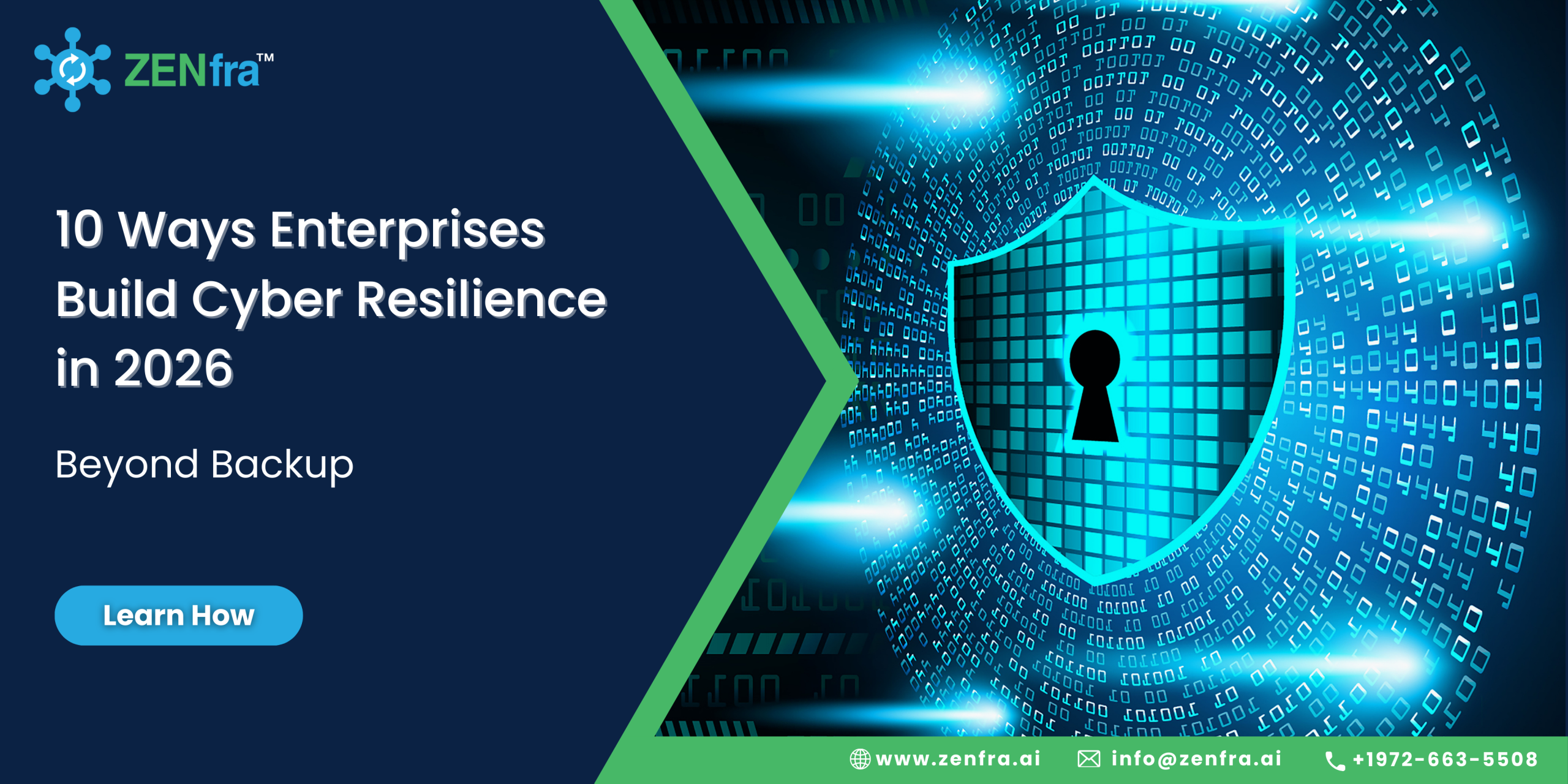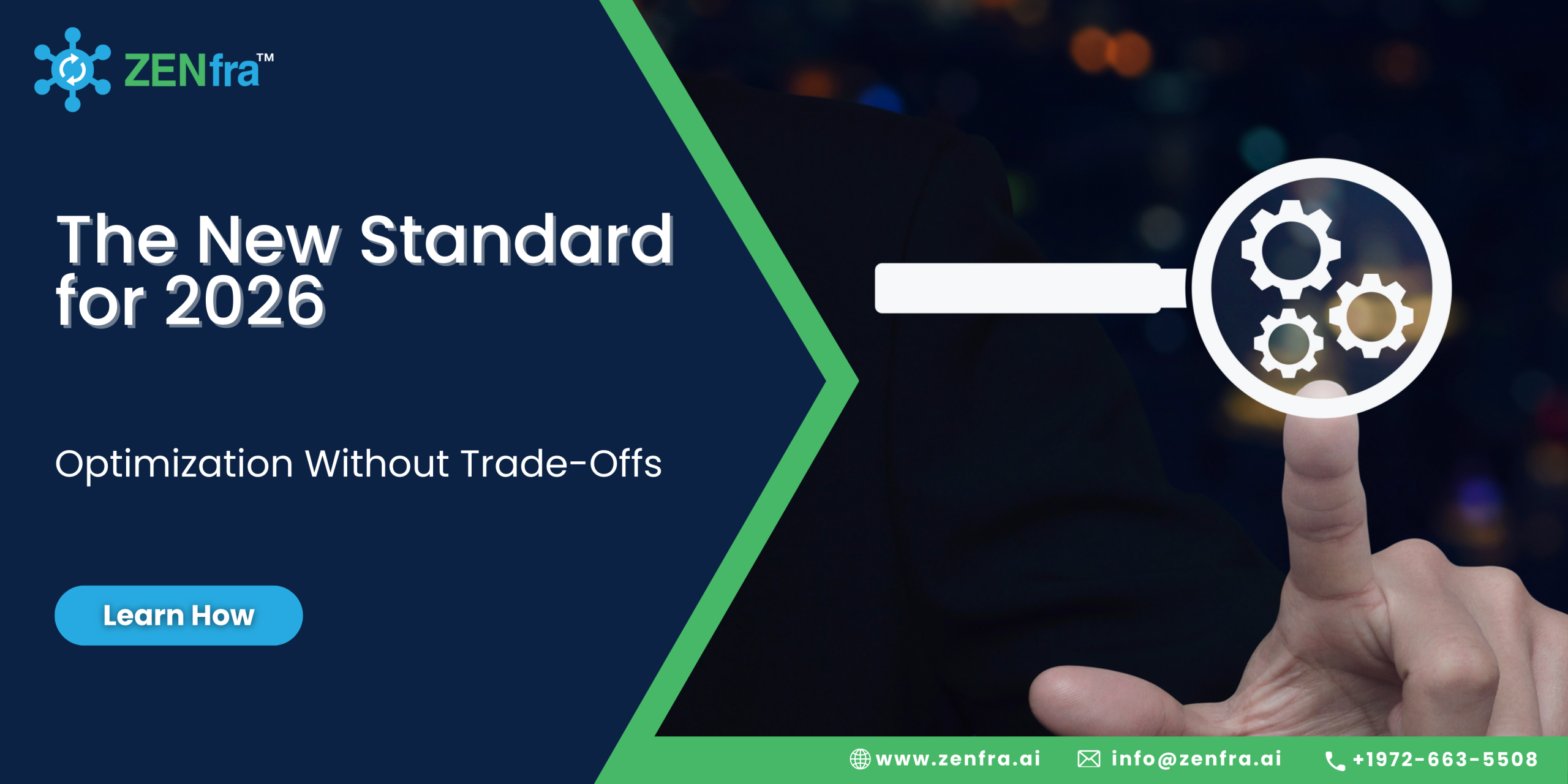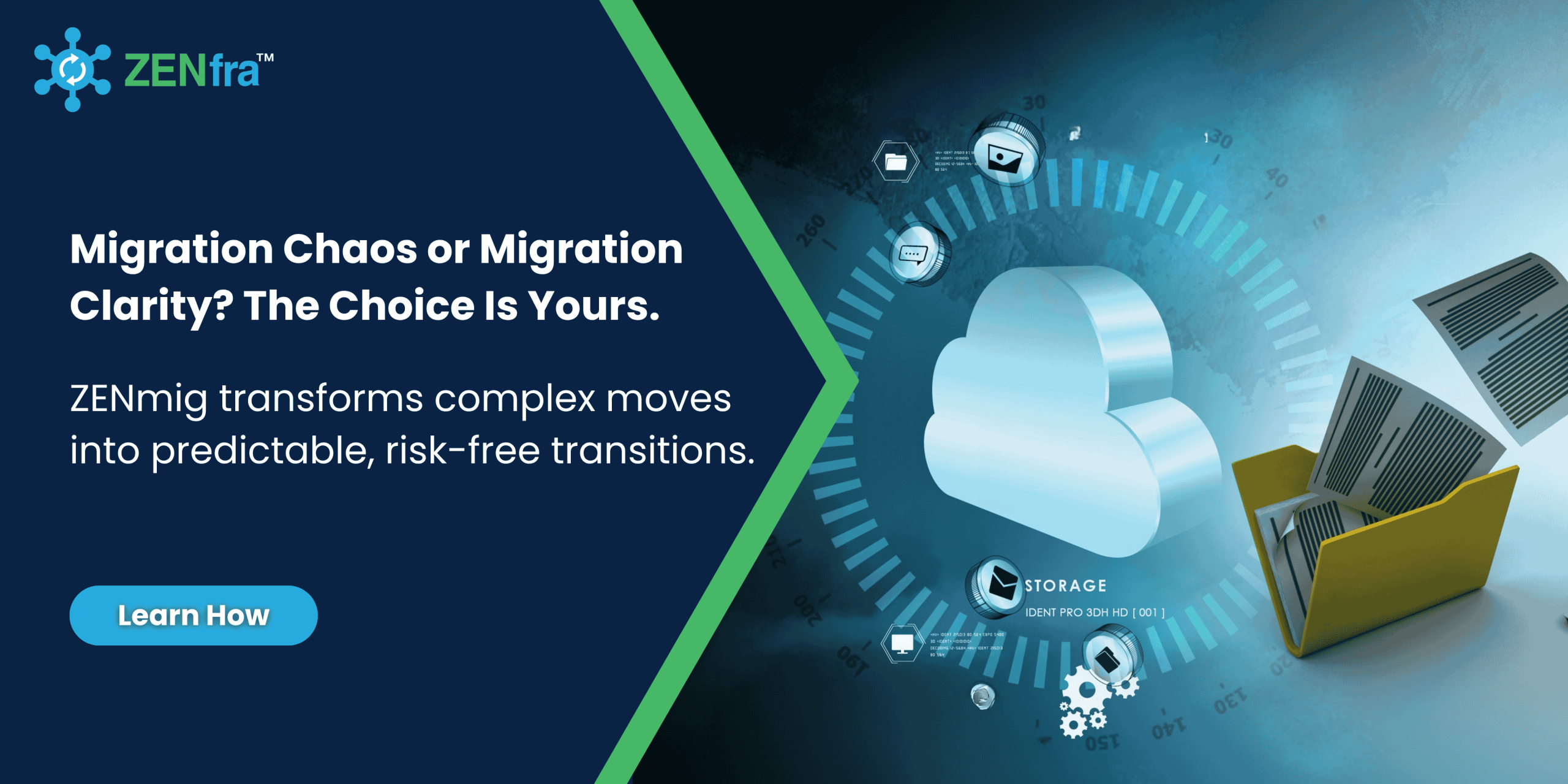
From hoping data survives to proving recovery works – cyber resilience is being redefined.
Blog Migration Chaos or Migration Clarity? The Choice Is Yours. Learn how ZENmig transforms complex moves into predictable, risk-free transitions.
Did you know that over 60% of businesses see a critical failure during their data migration process, leading to costly downtime and data loss? It’s not just a technical task, it’s a business continuity strategy.
Data migration is the process of transferring data between different storage systems, applications, or formats. Whether you’re upgrading systems, deploying new applications, or moving to the cloud, data migration is a critical step in ensuring your business operations remain seamless and efficient.
The process is multi-faceted, involving several key steps: preparing the data, extracting it, transforming it into the required format, and finally, loading it into the new environment. But don’t let the simplicity of these steps fool you—each stage is fraught with potential pitfalls.
At its core, data migration is about more than just moving data; it’s about ensuring that your data remains secure, accessible, and functional in an ever-evolving IT landscape. Whether driven by technological upgrades, regulatory requirements, or a need for operational efficiency, data migration is critical for modern businesses.
The scope and method of your data migration will depend on your business needs and technical requirements. Here are the five primary types of data migration:
Database migration involves moving data from one database system to another, which could mean changing vendors or upgrading to a newer version of the same software. Because different vendors often use different data formats, a transformation process is typically necessary.
Consider a scenario where a database upgrade could significantly improve performance but requires careful testing to avoid disruptions. Testing is critical here to ensure that the application layer remains unaffected and performance is maintained.
Storage migration involves moving data from one storage repository to another to take advantage of newer, more scalable, and efficient storage technologies. In this process, the data itself usually remains unchanged, but the storage environment is upgraded to improve performance, reduce costs, and support the growing demand for data processing. Think of it as upgrading from a traditional hard drive to a high-speed SSD to enhance data access and storage efficiency
CTA: Upgrade your storage without the hassle. Let ZENfra zMig handle your storage migration effortlessly.
Business process migration entails moving entire databases and applications that house essential business data—such as customer information, product data, and operational records—to a new environment. This type of migration is often triggered by organizational changes, mergers, or acquisitions.
The goal is to ensure that your data fits the new system’s structure, keeping business processes aligned and operational. Imagine a merger where seamlessly integrating data from different systems is crucial for maintaining business continuity
Application migration refers to moving an application from one computing environment to another. This could involve shifting from on-premises infrastructure to the cloud or moving from one cloud provider to another. During this process, data often needs to be transformed to match the new application’s structure. It’s common when businesses adopt new software solutions like ERP or CRM systems.
Cloud migration involves moving data, applications, or other business components to a cloud computing environment. This can include migrating from an on-premises data center to a public cloud, shifting between cloud platforms, or even moving data back from the cloud to on-premises—a process known as “cloud exit.”
Cloud migration is often pursued to enhance scalability, reduce operational costs, and access cutting-edge technology. Envision scaling your business operations effortlessly by leveraging the flexibility and power of cloud resources.
Transform your applications with ease. Discover ZENfra’s zMig for seamless application migration.
Data migration isn’t just about moving data from point A to point B; it’s a comprehensive process involving careful planning, execution, and validation. Here’s how it breaks down:
While data migration and data integration are often confused, they serve different purposes:
Data migration projects carry significant risks, especially concerning data security. A secure migration strategy is crucial to protect sensitive information and maintain regulatory compliance. Key elements include:
Data migration projects can face several challenges:
Overcome migration challenges with ZENfra AI-Powered insights. Secure, efficient, and hassle-free.
To ensure a smooth and successful data migration, follow these best practices:
Once the migration is complete, ongoing optimization ensures the new system delivers the desired performance and benefits:
Data migration is essential for businesses looking to upgrade their technology, enhance data capabilities, or move to the cloud. By following best practices, addressing challenges, and leveraging the right tools and strategies, you can ensure a successful migration that supports your long-term business goals.
Save Costs and Optimize Migration: Discover how ZENfra can cut costs and improve your migration process to see our tailored solutions in action and get your questions answered.
Ensure a Seamless Data Migration. Explore Our Expert Solutions Now!

From hoping data survives to proving recovery works – cyber resilience is being redefined.
Blog Migration Chaos or Migration Clarity? The Choice Is Yours. Learn how ZENmig transforms complex moves into predictable, risk-free transitions.

Smarter optimization. Measurable gains. Zero compromise
Blog The New Standard for 2026: Optimization Without Trade-Offs Smarter optimization. Measurable gains. Zero compromise. Introduction: Optimization Has Changed –

Migration Chaos or Migration Clarity? The Choice Is Yours.
Blog Migration Chaos or Migration Clarity? The Choice Is Yours. Learn how ZENmig transforms complex moves into predictable, risk-free transitions.
5000 Quorum Drive
| Suite 710 | Dallas, TX 75254